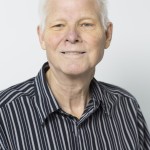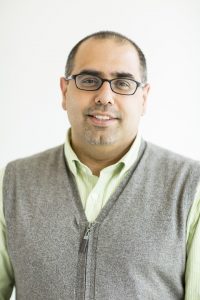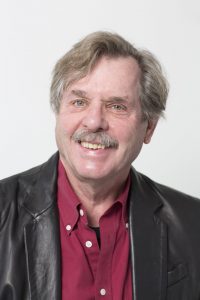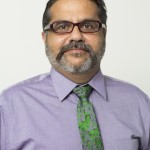Congratulations Talia, CEP Senior ’22, for being recognized as a #Husky100 student! “I hope to work at the intersection of equitable community development and education, thinking about how students and educators can co-create spaces of learning, inside and outside the classroom.”
Category: Urban Design and Planning
Bothell banned cars from Main Street in response to COVID. They may never return
Branden Born, associate professor of urban design and planning, talks about how the pandemic provided cities with an opportunity to explore and experiment. | The Seattle Times
Student Spotlight | Peter T. Dunn
We sat down with PhD candidate, Peter T. Dunn, to hear about his research within the College of Built Environments and what has made his time here as both a student and teacher successful.
Please introduce yourself.
P: I’m a student in the interdisciplinary PhD program in Urban Design and Planning. I have also worked as a TA and taught several urban planning classes. I’ve been a research assistant on a couple of projects, but my dissertation focuses on the question of how technology is shaping cities and how we ought to respond to that.
There’s a lot of exciting stuff happening with technology and cities – and a lot of fear. Part of what I’m trying to do is put people back into the picture and think about where human beings are in this story. All of these essential and longstanding challenges of the city are really political questions about how we get along together, how we make decisions together, and whose values and visions count when we’re trying to make a better city.
Tell me more about your research.
P: It’s all about mobility and cities, specifically smartphone apps for mobility like Uber, Google Maps, and bike share systems. Half of my research looks at users and how people’s knowledge about the city and how to get around is always present in how they interact with apps for mobility. The other half looks at urban planners and how they’re thinking about technology and adapting to this new world of information technology – digital infrastructure, digital platforms, information systems, and so on.
Will your dissertation produce recommendations or some sort of solution?
P: Well, I won’t have a solution and I don’t have the answer, but neither does anyone else. Part of it is just learning to look at the problem in a different way. The recommendation I might make is to look at the problem of transportation and urban mobility as not just a technological problem, but also as one that is fundamentally about people and political conflicts – about what it means to be in public and share space together, and what it means for us to exercise our own autonomy and independence as we move about the city.
We have a long history in urban planning and transportation planning of policies, solutions, and answers that are designed to produce great things – and sometimes do – yet often run up against challenges. For example, with Uber and Lyft, there’s software that allows people to carpool, making riding more efficient and also eliminating a lot of traffic. The problem is that people don’t necessarily use that – they still want to keep it simple and easy, go from point A to point B. And so, it’s really about changing perspective rather than producing another solution.
What got you interested in this research?
P: I minored in architecture as an undergraduate – my master’s degree was very design centered, as well – and there’s this notion that the way we build things shapes the way people interact. With this in mind, around 10 years ago, I started seeing a lot of development on social media and new ideas about smart cities and how technology is going to come and make cities more efficient, more environmentally friendly. So, I went back to architecture and said, well, is software similar to architecture in that the way we design software is going to shape the way that people behave and that the way we make these computer systems is going to change the nature of the public in the city and how we all interact and live with each other.
Thinking about the role of software in producing these new kinds of urban spaces led me to the kind of work I’m doing now, which is really about how the ways we design structures and environments changes what we love about cities, what we hate about cities, and how we interact with them.
Has your research shaped or changed the way that you teach at all?
P: When you study something for a long time, you realize that what might have started as a very simple story is actually quite complicated and also interesting in ways that you didn’t anticipate. I think it’s helped me to be more comfortable telling complicated stories in the classroom and inviting students to engage with complex stories, allowing them to be comfortable with ambiguity and uncertainty.
Another thing you learn from research is that you’re not an expert in things – you’re learning from whatever it is you’re studying. And so, I try to do the same thing in my classroom, which is to go in and say we’re all going to learn from each other, and we all have something to contribute.
What’s your teaching philosophy?
P: I think any instructor believes this, but it’s so important to have respect for students and to value their contributions. I especially try to make an effort to pay attention to students’ assignments and the work they do in class. I want to honor that work and respond to it and validate it. Students are bringing themselves to the class and to assignments and that deserves recognition and respect.
As far as my teaching philosophy goes, I try to balance two different goals. One is to give students confidence and the other is to give them a sense of curiosity. As an instructor, I want to say yes, you do know something, but you don’t know everything and it’s okay to be curious about the world and to go out and learn more about it.
Do you have any advice for aspiring scholars in built environments?
P: Focus on something concrete and specific – where your big idea hits the ground. For me, this is people making a trip somewhere and how they take out their phones, or it’s planners and how they pull up mobility data from the database to answer a question. Focus on a specific thing and how it matters in people’s lives, so that you’re not too abstract or theoretical.
At the same time, don’t get so focused on your specialization that you miss the big picture. Pay attention to the ways that everything is connected. This is absolutely true in built environments and in the study of cities – everything we do is interdisciplinary. For us to understand the world and for us to make a better world, we need to pay attention to where our specific focus connects to other dimensions and domains that we may not be experts in but are still important in the ways the rest of the world works.
What have you enjoyed about being at the College of Built Environments?
P: This program has been amazing, specifically because it’s interdisciplinary. Built into the very structure of the PhD program is the idea that to understand cities, you have to use a number of different disciplines. I’ve been inspired both within the PhD program and within the College to go to other lectures and dive into other topics to see what other people are talking about. I don’t really do anything specifically related to the environment and to ecology, but I love learning about it, and I love going to talks and hearing how people are thinking about buildings and greenhouse gas emissions and energy usage. Seeing all these connections happening under one roof is really inspiring.
I think the College’s focus on research is also great. Having a college that’s not just focused on building stuff – which of course we do – but also developing policies, designing buildings, and managing structures. We recognize that it’s essential to investigate and to learn and to understand the research that goes into built environments, so that when we do build things, it’s with knowledge that’s generated from research.
Why are the B.C. floods so bad? Blame the wildfires, at least in part | Bob Freitag
“A few short months after the end of a devastating wildfire season, many B.C. communities are cleaning up after disastrous floods that have swept away highways, submerged homes, triggered deadly landslides, stranded hundreds of people and forced thousands more to evacuate.
While climate change and (bad) luck each had some role to play, previous wildfires are known to boost the risk of disastrous flooding following a heavy rain or snowmelt.
Here’s why, and how to mitigate the risk.”
Via CBC
Marina Alberti |The Benefits and Limits of Urban Tree Planting for Environmental and Human Health
Many of the world’s major cities have implemented tree planting programs based on assumed environmental and social benefits of urban forests. Recent studies have increasingly tested these assumptions and provide empirical evidence for the contributions of tree planting programs, as well as their feasibility and limits, for solving or mitigating urban environmental and social issues.
Click below to read more of this perspective paper co authored by UDP Professor Marina Alberti
https://www.frontiersin.org/articles/10.3389/fevo.2021.603757/full
Marina Alberti | International Webinar on Urban Sustainability
Join CEDEUS (Centre of Urban Sustainable Development) of the Pontificia Universidad Católica de Chile in Santiago on March 9 at 10:00am PST for an International Webinar | “Urban Sustainability in an Eco-Evolutionary Perspective” a talk with Marina Alberti , to be held on March 9 at 3:00 p.m. (Chile). The talk will be broadcast through the Youtube channel of the Institute of Urban and Territorial Studies , and the IEUT academic, Carolina Rojas , will moderate.
March 9 (previously scheduled for Jan 12) 3:00 p.m. (Chile) which will be 10:00 am. PST
More info on their website here
Manish Chalana | Upcoming Book :Heritage Conservation in Postcolonial India
Associate Professor Manish Chalana has a book coming out at the end of the month:
Heritage Conservation in Postcolonial India
Approaches and Challenges
Edited By Manish Chalana, Ashima Krishna
Copyright Year 2021
Heritage Conservation in Postcolonial India seeks to position the conservation profession within historical, theoretical, and methodological frames to demonstrate how the field has evolved in the postcolonial decades and follow its various trajectories in research, education, advocacy, and practice.
Click Here for more information
Bob Mugerauer | Decision Making

Dr. Bob Mugerauer has completed work that brings to fruition much of his research conducted over the last ten years on health, and well-being. Specifically, problems concerning decision-making in the professions cover not only the environmental disciplines and practices but also health care and medical clinical practice. Joining many European and American physicians and nurses—especially a group of Scandinavian nurses—recent work conceptually clarifies and critiques excessive claims of positivistic medicine that would minimize the roles of judgment and experiential understanding.
His forthcoming essays will appear in the major Journal of Evaluation in Clinical Practice in three parts. The editors have made an unprecedented decision to publish the 30,000 word document in successive issues: Professional Judgment in Clinical Practice: part 1: recovering original, moderate evidence-based health care; part 2: Knowledge into Practice; part 3: a better alternative to strong Evidence-Based Medicine. The work has been triple refereed, with a final editorial evaluation as “being a strongoverview of the debates and a significant contribution to the literature.”
Congruent with this, he has been elected a “Distinguished Fellow” to the UK Society for Person-Centered Healthcare. This brings an invitation to publish next work in the European Journal for Person Centered Healthcare” and participate actively in the Society’s Conferences.
Himanshu Grover | Community Resilience Handbook for Disaster Preparedness and Management

Dr. Himanshu Grover’s research lands at the intersection of land use planning, community resilience, and climate change. Dr. Grover is also the co-Director of the Institute for Hazard Mitigation and Planning at the College of Built Environments. His research emphasizes place-based planning policies to balance economic, environmental, and social priorities to achieve equitable development and enhance community resilience.
“The same amount of money that you spent, let’s say, for building your capacity to provide a specific kind of risk communication through your social media platform, can be used for floods, for earthquakes, for terrorist attacks or for epidemics.”
In 2019, America with Kerala: Uniting for a Disaster Resilient Kerala, a joint project organized by the U.S. Consulate General in Chennai, the Centre for Public Policy Research (CPPR) in Kochi, and the Kerala State Disaster Management Authority (KSDMA) took place in response to disastrous floods and landslides that devastated Kerala, India. Dr. Grover participated in the project serving as the U.S. subject matter expert. He delivered the keynote address in which he shared the American experience in disaster management, and how it can inform Disaster Management in India. One of his key messages was to adopt an “All Hazards Approach” as a framework for risk reduction. Additionally, he highlighted the need for knowledge building and training at all levels to increase awareness about local hazard threats.
One product of the project was a community resilience resource guide for disaster preparedness that was released late fall of 2020. The guide includes input from community leaders who led disaster response efforts during the 2018 and 2019 floods and landslides in Kerala, as well as U.S. and Indian subject matter experts and other expert sources.
Following the launch of the community resilience handbook, Dr. Himanshu Grover also participated as an expert panelist by the US Consulate in Chennai. This online event had an attendance of more than 500 people internationally. The November 2020 panel, moderated by Dr. D. Dhanuraj, CPPR Chairman, included speakers Dr. Muralee Thummarukudy, Chief of Disaster Risk Reduction, United Nations Environment Programme (UNEP); Dr. Himanshu Grover, co-director, Institute for Hazard Mitigation and Planning, College of Built Environments, University of Washington; Dr. Nivedita P. Haran, IAS (Retired), Honorary Chairperson, Board of Directors, Centre for Migration and Inclusive Development, Kerala; and Dr. Shekhar L. Kuriakose, Member Secretary, Kerala State Disaster Management Authority.
As a follow-up to the 2019 initiative, U.S. State Department, through U.S. Consulate General in Chennai, asked Dr. Grover to develop a Disaster Management Curriculum for a new, 40-hour elective course to be incorporated into existing academic programs in universities, autonomous colleges, and other relevant governmental and non-governmental agencies across India. After developing the curriculum, Dr. Grover will visit India on a speaking tour to promote the curriculum among relevant institutions. This American/internationally approved curriculum will help develop regional expertise in disaster management; promote academic collaboration between Indian and U.S. institutions in this area and highlight opportunities to attract students and practitioners across India to seek higher studies in this field in the United States. Dr. Grover anticipates that his initiative will establish the College of Built Environments as a leader in disaster management education. He hopes this collaboration will result in establishing partnerships with reputed Indian educational institutions and professional bodies which will lead to increased opportunities for student recruitment as well as placements for our graduates.
Robert Freitag | Story Telling

Bob Freitag is actively involved in exploring how storytelling can help communities address difficult emotionally charged topics. Opportunities available through storytelling is described in a published in the Story telling Freitag et al JEM. He published a follow up article that actually tells a story, “showings” how threaten community residents address climate change. Bob is currently write a screen play, again showing, how a participate let process using storytelling.
ABSTRACT
Almost everyone can relate to the experience of telling a story. This article explores how storytelling is being used to identify risks and create hazard mitigation strategies, as well as how it can promote learning within the field of emergency management. Storytelling is both a pedagogical tool and an invaluable resource for practicing emergency managers. This article illustrates the ways in which the process of telling a story enables participates to talk about stressful concerns, internalize complex concepts, and even have fun. The article explores how storytelling drove the public process leading to the adoption of hazard mitigation plans, and how eight types of stories, as defined by the American humorist Kurt Vonnegut, can strengthen emergency management education. This article also explores how research suggests that storytelling can provide an effective way for both the tellers of story and their listeners to find meaning in events, provide context to what is being taught, transmit emotion along with information, develop a professional identity, build empathy and compassion, and help with remembering events and lessons learned. The authors have a long history of utilizing storytelling and present this article in order to share and explore storytelling as applied to the discipline of emergency management.

